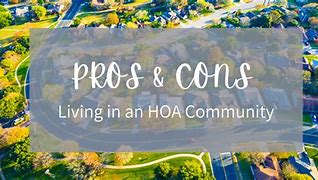Below is a review of the posts on Facebook and LinkedIn from the past week. You can check out the full posts by clicking on the links.

The post on Sunday 5/26/2024 taught that the EEOC publishes new Guidance on workplace harassment for the first time in 20+ years. The Guidance was effective 4/29/2024 and supersedes the EEOC’s previously published guidance from the 1980s and 1990s. The new Guidance addresses recent and developing areas including workplace harassment related to sexual orientation and gender identity, pregnancy and related medical conditions, and remote work. Let’s look a bit closer at those.
Sexual Orientation and Gender Identity
Remember the Supreme Court’s 2020 Bostock v. Clayton County decision? (IF not, the post reminds you of its holding.) Based on Bostock, the Guidance provides examples of harassing conduct based on those protected characteristics. It also explains that harassing behavior based on sexual orientation and gender identity can include, among other things, (1) outing or disclosure of an individual’s sexual orientation or gender identity without permission, (2) harassing conduct because an individual does not present in a manner that would stereotypically be associated with that person’s sex, and the other things listed in the post.
Pregnancy, Childbirth or Related Medical Conditions
As a result of new laws protecting employees with pregnancy, childbirth or related medical conditions (such as those noted in the post), the Guidance reaffirms that sex-based discrimination under Title VII extends to such conditions. Workplace harassment can arise from things such as (1) changes in physical appearance due to pregnancy, (2) lactation, and the others listed in the post.
Remote Work
Yep, huge land mine for some employers. The Guidance emphasizes that harassment may occur in a work-related context outside an employee’s regular workplace, including through an employer’s email or instant messaging system and the other methods noted in the post (which might surprise you). Some examples of what might contribute to a hostile work environment through remote work include (1) sexist comments made during a video meeting; (2) ageist or ableist comments typed in a group chat; or the others listed in the post.
All told the Guidance includes over 70 practical examples and advice on a variety of issues related to harassment. At the same time it released that Guidance, the EEOC also issued a Summary of the Guidance’s Key Provisions, FAQS for Employees: Harassment at Work, and a Fact Sheet for Small Businesses.
TAKEAWAY: Know what those who enforce the law look for – and keep an employment lawyer on speed dial.

The post on Monday 5/27/2024 noted Amazon CEO’s comments violated labor law, NLRB Judge rules. What is at issue are ethe comments made by Amazon CEO Andy Jassy to the media in 2022 about the downsides of unionization (including that “if they selected a union, they would become less empowered and would find it harder to get things done quickly.” The NLRB Judge cited various comments Jassy made (including those noted in the post) in various places and to various persons/entities. The Judge said that Jassy “offered no objective basis” for his assertions. The Judge also required Amazon to post a notice at its US facilities informing employees of their rights and committing not to threaten them. Not surprisingly, Amazon said it strongly disagrees with the ruling and plans to appeal. Its statement is detailed in the post. On the other side, the Amazon Labor Union, which brought the case to the NLRB, celebrated the ruling.
US law allows companies to oppose and argue against unionization, but not to threaten to punish workers if they organize. Rulings by NLRB judges can be appealed to the Board in Washington, DC and from there to federal court. Some limitations on the NLRB are noted in the post.
TAKEAWAY: Yep – know what you can and cannot say in the workplace and remember that certain protections under the National Labor Relations Act apply to ALL workplaces, union or not.

The post on Tuesday 5/28/2024 explained that King & Spalding was sued over diverse law student hiring program. We noted that this is just the tip of the iceberg that cometh over diversity practices … Sarah Spitalnick, a former law student, is suing big law firm King & Spalding, alleging it discriminates against White heterosexual candidates for certain summer associate positions (notably that it preferred non-White or non-heterosexual candidates for a diversity fellowship). Spitalnick filed suit in federal court in early May.
King & Spalding is the latest major law firm to face legal challenges to diversity hiring programs as a result of a US Supreme Court last year that struck down affirmative action on college campuses. Suits against Winston & Strawn, Perkins Coie, and Morrison Foerster were withdrawn after they took the actions noted in the post.
King & Spalding did not immediately respond to a request for comment. Spitalnick alleged that she decided against applying for a summer position at King & Spalding in February 2021 because it “would have been a futile gesture” given the job listing (the relevant language from which is in the post).
Spitalnick is seeking an unspecified amount in compensable and punitive damages and non-monetary relief as listed in the post. The suit was filed after a for-cause finding by the EEOC (see the post for more on that).
TAKEAWAY: While the Supreme Court may not have intended wide application of its decision, we in the legal field anticipated that – and it is happening as evidenced here. Employers must be more careful then ever.

The post on Wednesday 5/29/2024 told us neighbors got winery closed over HOA rule – but the lawsuit still goes on … But the owner of the winery has decided to push back and try to bring new information to light so he could reopen.
Jackson Hole Winery, in Jackson, WY, was a booming $2 million home-based business started by Bob Schroth before it was closed by neighbors Robert and Viesia Kirk. Schroth said he’s been in business for years and only in 2022 did the neighbors decide to do something about it. That something? The Kirks filed a lawsuit in November 2022 claiming that the Schroths didn’t get permission for what is detailed in the post. The Judge ruled in favor of the Kirks in March, citing the HOA rules which forbid commercial businesses. Let’s dive a bit deeper.
The Kirks’ complaint listed events at the winery including tastings, weddings, and tents and signs around the property to support their allegation about business operations. They talked about volume and quantity – see the post. And perhaps most importantly the Kirks highlighted an HOA rule prohibiting commercial businesses requiring public access or extra employees. How the Kirks said they (and others) were affected is in the post.
In 2011, the Schroths asked the HOA to approve them making wine in their barn; they received approval. The Schroths tried to show that the Kirks are not affected by the winery business by noting some facts – see the post. The Schroths’ latest filing alleges that the Kirks “will suffer no harm whatsoever from the operation of the winery, and never have.”
And what about the local municipality? Teton County heard about the complaints against the winery in 2013 and issued a conditional use permit for the Schroths in 2016. But then in 2022 it added some limitations such as that noted in the post. The Schroths have a lot invested in the winery – see the post for some $$.
The Judges statements supporting his ruling are noted in the post. It was essentially based on the rule violation. And what about the Kirks’ delay in instituting suit? See the post for how the Judge wove that into his decision. The Judge’s decision bans most of the winery’s home marketing activities and the employment of anyone who’s not in the Schroth family. There were also other limitations as noted in the post.
But then came what the Schroths hope will turn the tide in their favor – new information based on which they hope the judge to reopen the case and their winery. It involves the Kirks. See the post for the details. The Schroths are asking the Judge to rule that based on that new information, the Kirks’ suit was untimely. They also ask more of the Judge as noted in the post.
TAKEAWAY: HOA (and condo) rules apply to all owners – and can be enforced by all owners. Know the literal rules (and contact a community association lawyer to help you)

In the post on Thursday 5/30/2024, we discussed the condo & HOA home front: 18 things all condo/HOA members should know. 1. HOA and condo living involve a trade-off of independence for the benefits the association provides. Who might not be suited to this type of living? See the post.
2. There is no “us” and “them” – only “us.” The condo or homeowners’ association is you, and you are the association.
3 and 4 also have to do with the basics of associations – see the post.
Property
5. In condominiums, the common area is often more than just the common grounds – it often includes unit walls, floors, and ceilings. Check with the association before cutting into or doing anything to any of those areas.
6 is more about the common area and owners’ use – see the post.
Enforcement
7. The association’s governing documents are important. They should be carefully reviewed BEFORE buying into a community association because they can greatly affect your life there.
8. Rule enforcement is a two-way street. What that means in this context is in the post.
9. It’s NEVER better to ask forgiveness than permission. You don’t want to be the one keeping attorneys busy – and paying their fees.
10 has to do with enforcement and is in the post.
Relationships
11. Owners are observers, not participant, in board meetings. Other than any open forum time, owners must just let the board deliberate and do what they have been elected to do.
12 suggests a procedure for owners who are unhappy with a board decision – see the post.
13 is about being neighborly (the art of which seems to have disappeared, or certainly lessened, in recent years) – again, see the post.
Financial
14. Assessments should naturally increase somewhat each year – because homeownership costs go up. Salaries, materials, more, they all increase and that is reflected in the assessments. If the board tells you there is no increase in assessments for a given year, you should worry about what is NOT being done as for repair and maintenance (now or in the future).
15 is about association reserves and is also important – see the post.
16 talks about the ability to withhold assessments – know what you can or cannot do and the possible legal ramifications. See the post.
Resources
17 is about CA law, but you need to know where you can find out about applicable PA law (hint, contact a community association lawyer)
18. There is an international source of education for volunteer leaders – the Community Associations Institute. It has Chapters throughout the world, including one in PA. Check with a local Chapter for governance education. Find them at www.caionline.org.
TAKEAWAY: Owners and board members are all part of the intricacies of community association life – all need to know how to live together under the documents that bind them. A lawyer versed in community association law can be of great assistance.

The post on Friday 5/31/2024 told us workers accuse Delco emergency services director of sexual abuse, discrimination. We suggested you just read the allegations in this close-to-home case …
The director of Delaware County’s Department of Emergency Services, Timothy Boyce, was fired by county officials after being accused of sexual abuse as well as sexual and age discrimination. Two people who claim to have worked in Boyce’s office filed complaints with the EEOC, alleging that Boyce hired and promoted employees based on his own “sexist personal preference” rather than experience or ability. One of the workers also claims she was sexually assaulted by Boyce in his office on Jan. 30, 2024.
Details on the complaints to the EEOC are in the post. The workers allege that job descripts meant nothing, that it all came down to Boyce’s “sexist personal preference in the fiefdom which he is allowed to run.”
The complaint includes allegations by the worker who claims to have been assaulted that the county was made aware of Boyce’s behavior in March. What is really interesting is the employee’s background and rise within Boyce’s office – see the post. The employee alleged that during the term of employment, Boyce made inappropriate comments, calling her “intriguing” and saying she “had a nice ass.” Then January 30th happened – see the post for what allegedly occurred. The employee said she cried in her car afterward and called off work the next day. She alleged that she texted Boyce directly a few days later – what the text said is in the post. And Boyce’s alleged response? Yep, also in the post.
And what about the County? Delaware County officials said that they immediately placed Boyce on leave upon learning of an investigation into these allegations. Their statement is detailed in the post. On May 10th the Delaware County Council voted to fire Boyce. But that is not the end of the matter; officials said they are interviewing members of Boyce’s office and the Pennsylvania Attorney General’s Office is also conducting an investigation.
Boyce’s response? See the post.
TAKEAWAY: oh my; treat all employees equally and don’t discriminate on the basis of a protected characteristic (including but not limited to age and sex). At least some parts of justice can be swift …

Finally, in the post yesterday 6/1/2024, we talked about labor pains: you moved my parking spot! I’m suing. Don’t laugh yet (instead say thank you to the US Supreme Court). Let’s start with a sample scenario: You’re just about ready to open a new workplace in Smallsville. All you need to do is to find the right person to manage it. You think you have the answer: transfer your manager, George, from Everytown to Smallsville and promote George’s number two, Ada, to run the Everytown location. George retains his job title, compensation and benefits and will still have the opportunity to climb the corporate ladder. All good, right? Well … After a few months in Smallsville, George filed a charge with the EEOC alleging discrimination on the basis of sex (as a result of transferring him to Smallsville and promoting Ada). But was George really harmed? The Supreme Court has said he might have been. Read on.
The Supreme Court’s April 17, 2024, decision in Muldrow v. St. Louis drastically lowered the standard for an employee to prove workplace discrimination relative to a forced transfer and other employment actions. The standard prior to Muldrow is noted in the post. For more details on the Muldrow case (background, holding), see our posts of Thurs. 4/25/2024 and Mon. 3/25/2024.
The new standard after Muldrow is “some harm” – which can often be met even if title, pay, and benefits remain the same. And this is wide-reaching – many federal appellate decisions across the country are now invalid. Examples are in the post.
The Supreme Court itself provided a few (not unexpected) scenarios where an employee whose claim failed under an old “significant harm” standard would now succeed under the new “some harm” standard. See the post. And to pile on, Justice Kavanaugh suggested in his concurrence that employees would easily be able to show “some harm” through a change in any of the things listed in the post (long list, pretty everyday workplace things)
The litigation has just begun. But employers should take a closer look before taking action (even what might not be thought of as adverse action) under this new standard.
TAKEAWAY: Ensure that transfers and other employment decisions are made for legitimate, non-discriminatory reasons—document the reasons – and get the blessing of an employment lawyer.

 York, Pennsylvania 17403
York, Pennsylvania 17403